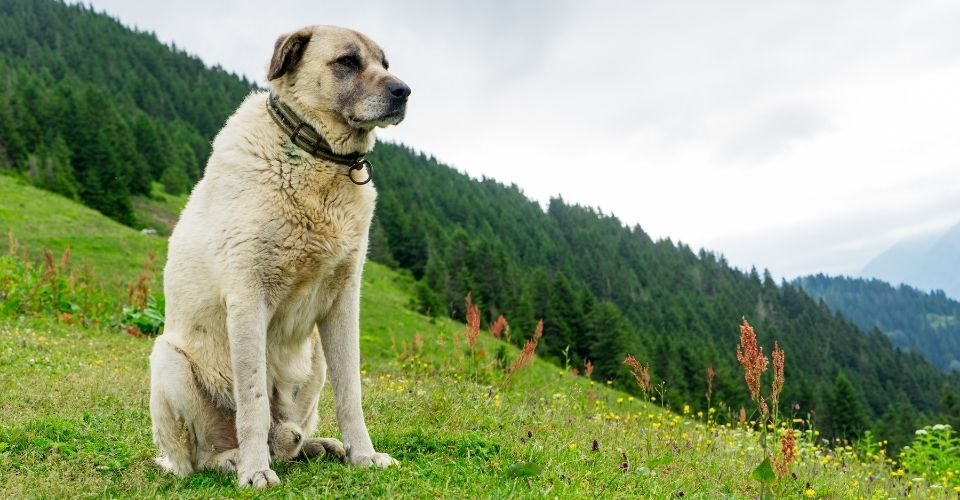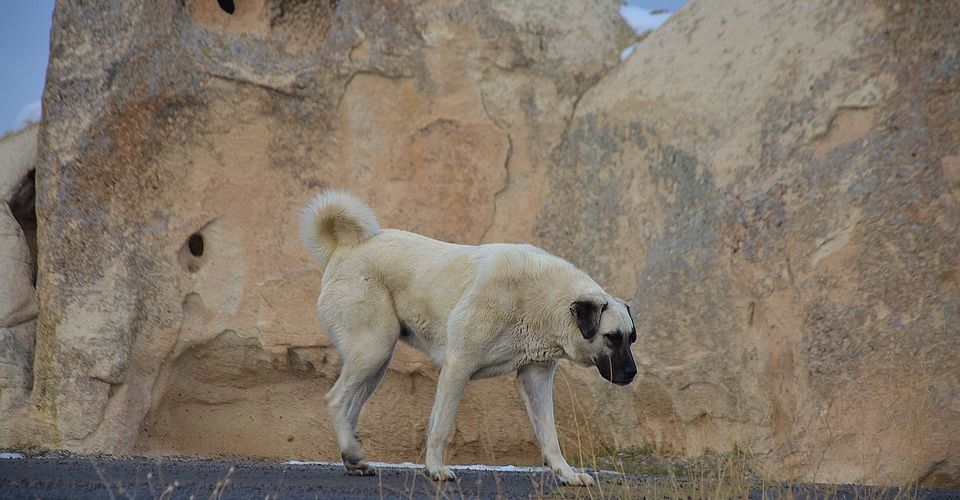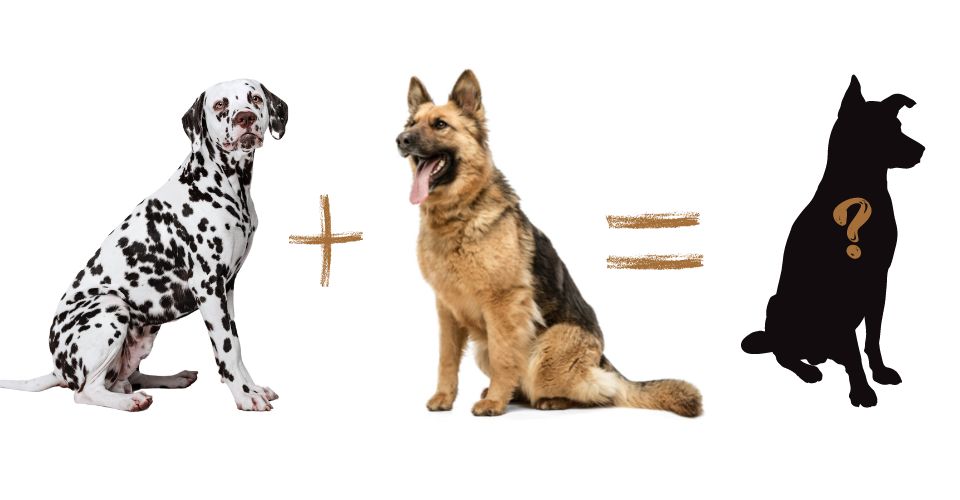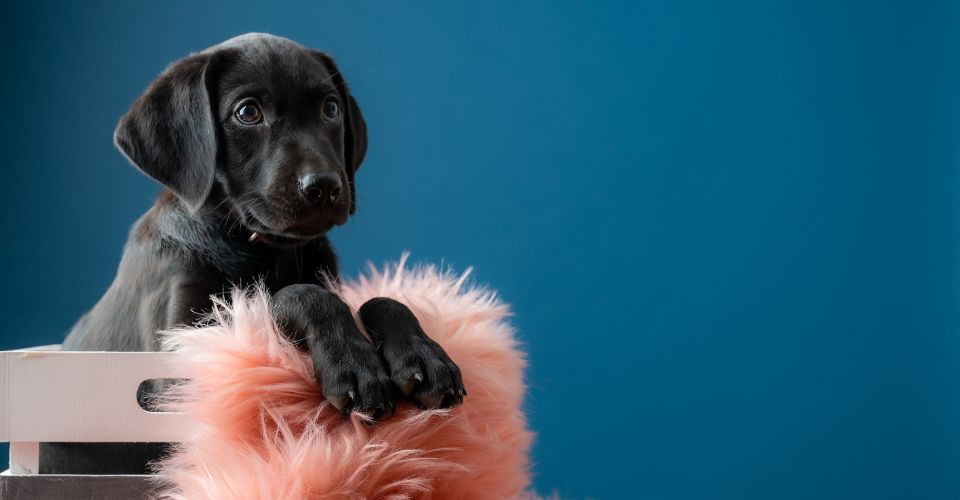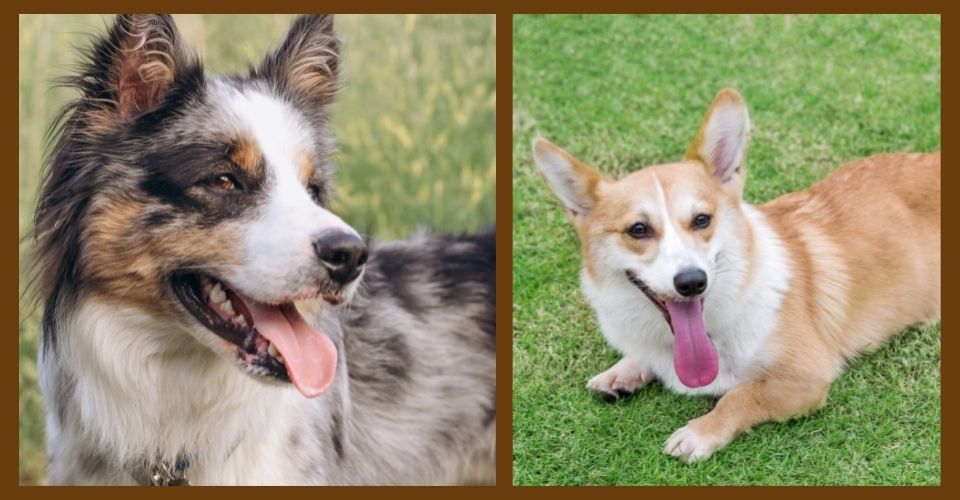Also known as the Anatolian Shepherd Dog and easily distinguished by its majestic silhouette, the Kangal is a large and furry guard dog that has been here since ancient times.
Despite their imposing stature and serious personality, Kangals are feasibly affectionate – a true impersonation of ‘gentle giants.’ Besides, they do not have overwhelming care requirements, nor are they are prone to some specific health conditions.
It is a dog recommended only for experienced owners. Find a comprehensive guide to the breed below if you have recently got one.
Did You Know?
The Kangal is the national dog of Turkey.
Kangal Overview
Breed Overview
Other Names: Kangal Shepherd Dog, Anatolian Shepherd Dog
Size (inches): Up to 29 in males and 27 in females
Weight (pounds): Between 110 and 150 in males and 80 and 120 in females
Hypoallergenic: No
Coat Colors: Blue fawn, brindle, fawn, liver, red fawn, white, biscuit and white, and gray fawn
Eye Color: Ranges from light amber to dark brown
Nose Color: Black or solid brown
Suitable For: Experienced people and families
Place of Origin: Turkey
Lifespan: 10 to 13 years
|
Good with Family: |
|
Good with Children: |
|
|
Good with Other Dogs: |
|
Shedding: |
|
|
Drooling: |
|
Vigilance: |
|
|
Adaptability: |
|
Playfulness |
|
|
Trainability |
|
Barking |
|
|
Energy |
|
Openness to Strangers |
|
Appearance
The Kangal is a large-sized breed. These dogs have muscular bodies over which a double coat exists, the upper coat being either soft or harsh while the under one is dense. The fur is comparatively longer around the neck.
On the front, having solid-patterned nose, their muzzle is square in shape above which they have almond-shaped eyes. The ears are droopy and about six inches in length on the top of their head. On the hind end, their tail is long, with a curt near the end.
Though Kangals come in a range of colors and patterns, brindle and liver are most preferred by the breeders.
Personality and Temperament

The Kangal personality is oriented towards flock guarding. Hence, they are intelligent, loyal, and independent sentries – securing a place for themselves among the most desirable farm dogs.
It is a bit complicated to describe the friendliness of Kangals. Due to their protective instincts, do not expect them to show affection, either towards people nor pets. However, if they consider someone to be a part of their flock, or – to be precise – family member, they will be very caring and loving. Hence, the key to their desirable behavior lies in proper socialization.
Caution!
Due to their large size, Kangal dogs can easily knock over a child. It is thus recommended to always keep an eye on whenever your dog interacts with children.
History
It is believed that the Kangal breed originated about 4,000 years ago in the Kangal District of Sivas province in the Anatolian part of Turkey. Capable of fighting fearsome predators like jackals and wolves, these canines were bred for guarding livestock.
The breed made its way to the United States circa World War II. In the 1950s, American ranchers began importing these dogs in a large number. However, the credit of providing the breeding foundation in the U.S. goes to Lieutenant Robert Ballard, a U.S. Navy officer.
The passing of the Endangered Species Act of 1973 made these dogs especially important because they intimidate the predators rather than fight them.
In 1996, the American Kennel Club (AKC) recognized the Kangal and the Anatolian Shepard Dog breed as the same.
Did You Know?
Being millennia old, the Kangal has a mention in the Book of Job.
Kangal Growth Chart
Here is an approximate weight range for the Kangal breed during their months of puppyhood:
| Age (months) | Weight (pounds) |
| Three | 35 to 45 |
| Six | 69 to 85 |
| Nine | 88 to 111 |
| 12 | 100 to 10 |
| 15 | 106 to 133 |
| 18 | 110 to 140 |
Kangal Care
Remember, owning a dog is a privilege but also a responsibility. So, learn below to find how to execute your responsibility in the best possible way.
Diet
Owing to their big size, Kangals need an appropriate amount of food rich in nutrition every day. In terms of quantity, the amount of food should coincide with your dog’s age requirement. Nevertheless, whatever the quantity may be, always divide it into three or four meals to keep the sugar levels stable.
Coming to the energy intake, the daily calories requirement of Kangals is as per the following table:
| Sex | Puppy | Adult |
| Male | 3,900 to 4,800 calories | 2,600 to 3,500 calories |
| Female | 3,000 to 4,100 calories | 2,100 to 2,800 calories |
Note that choosing the correct and high-quality dog food is crucial. Since it is evident from the growth chart above that Kangals grow slower than most breeds, a wrong food option can cause nutritional deficiency due to the difference in metabolism.
Here are three other pieces of advice: First, though Kangal dogs do not tend to overeat, you must always keep a check on treats to avoid obesity in your pet. Second, good news! Your dog can eat human food too. But make no mistake – always check with the vet before you feed him the same food you eat. And third, regardless of what you feed him, always keep your furry friend hydrated.
Exercise
Even though the Kangals have moderate energy levels, consider walking your pet on a daily basis as doing so can provide both physical and mental stimulation while keeping his health up to the mark. Besides, it can also help you form a close bond with your dog.
Caution!
For better security, keep the fences of your yard high if you choose to exercise your Kangal inside your home. On the other hand, if you take him outside, keep him leashed—for the safety of other dogs as well as himself.
Training
The Kangal is an intelligent breed and, thus, does a good job when it comes to training. Nonetheless, the independent nature of these dogs can be an impediment in the way of effective dog training.
Based on the Kangal characteristics, you must, hence, adhere to the following recommendations on training:
- Due to the protective nature and wariness towards others, your pet must be properly socialized.
- Obedience training must be among your top priorities because Kangals do not respond well to basic commands.
- As per the AKC, never offer your pet guard training.
- Always use positive reinforcements. Treats can help a lot for this purpose.
Grooming
Though the Kangal coat is double, it does not require much brushing. In fact, brushing once or twice a week will suffice. However, note that the undercoat sheds twice every year. Therefore, you need to brush your pet thoroughly during each shedding season to give it a nice and clean look besides removing the dead hair. In addition, brushing regularly helps you spot bad skin conditions easily if any.
Bamboo Groom Palm-Held Brush can help a lot for this purpose. It is a soft-bristle brush that effectively removes the dead strands while its oils ensure smoothness, giving it a well-finished look.
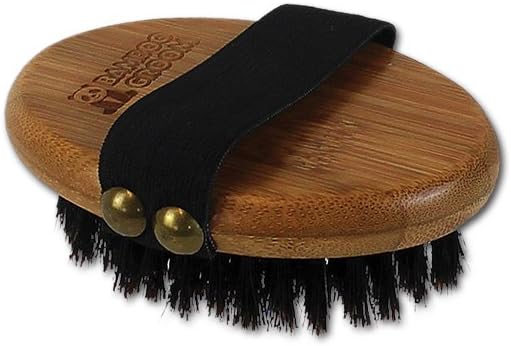
|
Health
In general, the Kangal is a healthy breed. It is evident from the fact that, unlike in other dogs, the prevalence of dysplasia and bloating is not common in this breed. Furthermore, the Kangal lifespan is also above 10 years.
Nevertheless, the few health issues owners need to be conscious of are:
| Health Issue | Description | Symptoms | Treatment |
| Patent Ductus Arteriosus (PDA) | Ductus arteriosus muscle fails to contract, which may lead to heart failure. | Breathing difficultyLoud heart soundIntolerance to exercise | Surgery |
| Hypothyroidism | Thyroid gland malfunctions. | Hair lossFlaky skinBlack skin patches | None |
| Dental and Ear Issues | Mainly due to infections. | Bleeding gumsFrequent ear scratching | Medication |
Caution!
The Kangal breed is known for its sensitivity to anesthesia. Therefore, the owners should make sure that the vet they approach does know this fact before proceeding with any procedure on your pet.
Kangal Price
Kangal price ranges from USD 1,000 up to – embrace yourself! – a whopping 5,000, depending upon the bloodline and the quality of the breeder.
Since the Kangal breed is not popular among people other than the enthusiasts, you may have a hard time finding a Kangal for sale. However, if you are successful, it is advisable to buy Kangal puppies only from those breeders who ensure scanning for entropion (inward turned eyelid).
Other than that, make no bones about the fact that keeping a Kangal can cost you up to USD 1,200 a month. Though most of the cost is incurred at an early age, and a significant portion of it is spent on the diet, the average decreases with age.
Some Kangal Facts
Here are some interesting Kangal facts:
The Kangal Is a Super Tolerant Breed
Tolerating hot weather is a piece of cake for Kangal dogs. Likewise, they also do well in low temperatures.
Kangals Were a Part of a Top Secret Project
Two Kangal dogs were imported into the United States immediately after the Second World War by the Department of Agriculture for a top-secret ‘Sheepdog Project.’
Kangal Dogs Have a Good Speed
Running speed is among the best characteristics Kangal dogs have. These dogs can run at about 30 miles an hour.
Kangal Pros and Cons
Pros
- Guarding: Kangals are excellent at guarding.
- Friendly: They are very affectionate if well-socialized.
- Speed: They are known for their pace.
Cons
- Aggression in Certain Situations: Couple their biting power with bad socialization, and they can end up being very dangerous.
- Price: They can have a hefty price tag.
- Diet: Due to their size, they need a lot of calories.
Kangal FAQs
Three commonly asked questions regarding the Kangal breed are:
Anatolian Shepherd vs. Kangal: Are They Same?
The difference between the Kangal and the Anatolian Shepherd breed is mainly a matter of standards. Some organizations consider and accept them the same – as in the case of the American Kennel Club (AKC), while others make a distinction between the two – as in the case of the United Kennel Club (UKC), which recognized the former in 1998 and the latter in 1993 separately. There are some other minor differences as well, such as colors.
Is Kangal the Strongest Dog?
In terms of biting power, yes. Standing at 743 PSI, the Kangal bite force ranks top among the existing dog breeds.
Can Kangals Be Good Family Dogs?
If they are properly socialized, the answer is a big yes. Being guardians by nature, Kangal dogs can be aggressive in some situations. However, if trained well, they turn out to be very friendly, caring, and loving, making them a perfect family furry friend.

